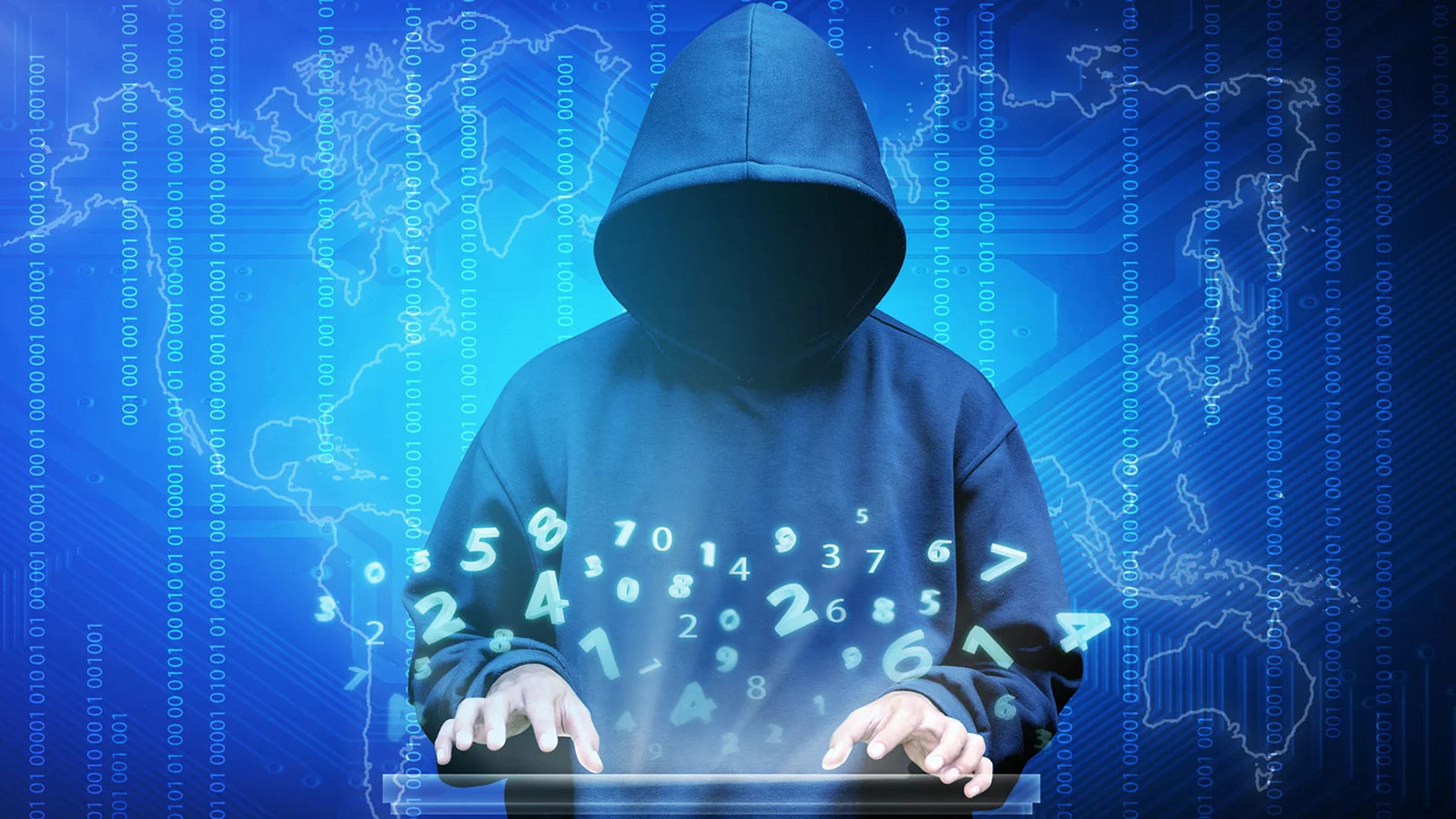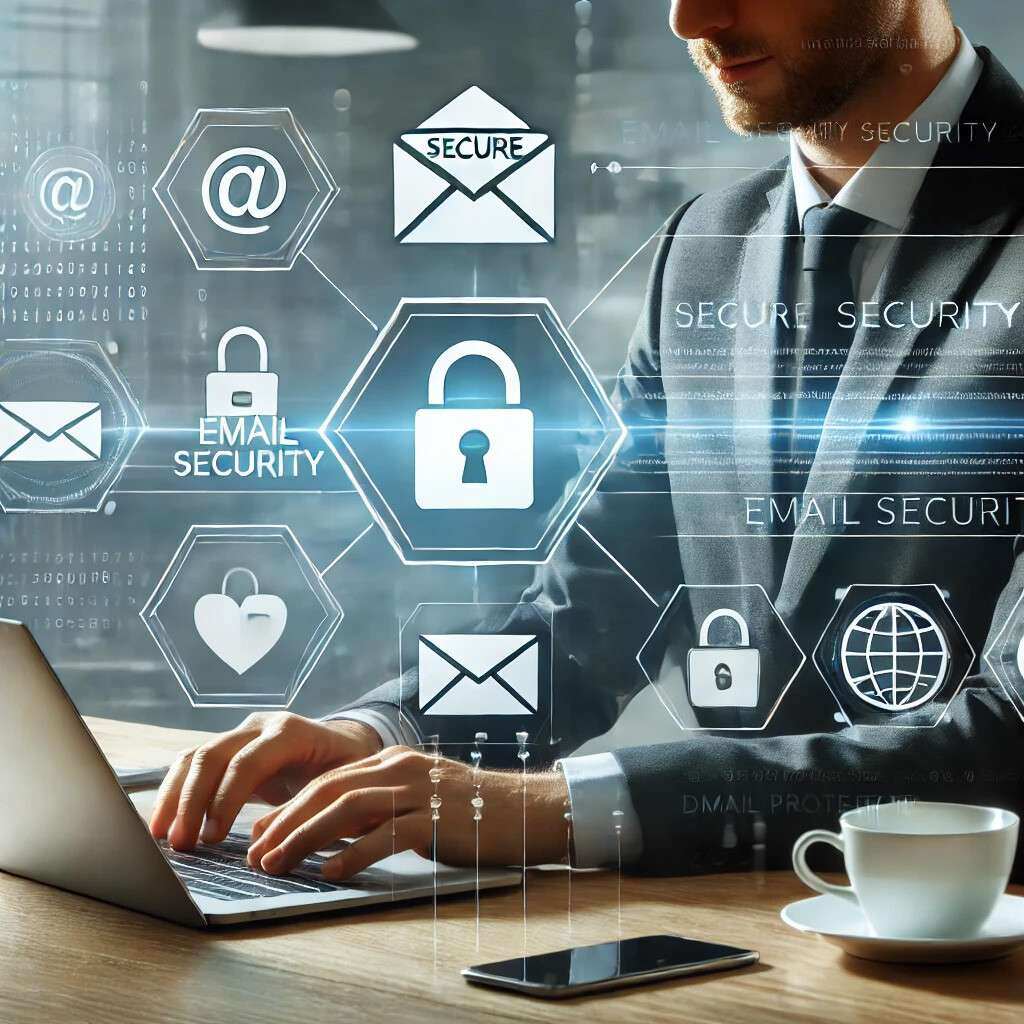When we think of ransomware attacks, immediate costs like ransom payments often come to mind. But what about the expenses lurking beneath the surface? Let's uncover the often-overlooked repercussions of ransomware attacks.
The hidden costs:
Operational Downtime: Post a ransomware attack, system downtime is inevitable. Whether it's a few hours or several weeks, this can lead to a significant loss of revenue, especially for businesses that heavily rely on online operations.
Damage to Brand Reputation: Word spreads fast! Once customers learn about a security breach, trust is eroded. Winning back consumer confidence can be an uphill battle, not to mention the potential loss of loyal clientele.
Increased IT Expenditure: Recovering from an attack isn't cheap. Think of costs associated with system repairs, data recovery, and strengthening cybersecurity measures. Also, hiring external experts for damage control can be a pricey affair.
Legal Liabilities: If sensitive customer data is compromised, legal battles may ensue. Regulatory fines, especially under laws like GDPR, can be substantial.
Is your data
Secure?
Contact Us
Loss of Intellectual Property: For sectors like tech, manufacturing, or pharmaceuticals, the loss of intellectual property due to a ransomware attack can lead to a significant competitive disadvantage.
Increase in Insurance Premiums: Having suffered a cyberattack, businesses might see a spike in their cybersecurity insurance premiums. Insurance providers could perceive them as 'high-risk' entities.
Employee Morale & Productivity: Dealing with the aftermath of an attack can be stressful. Employee morale might take a hit, leading to reduced productivity. Training sessions to prevent future attacks can also affect work hours.
Costs of Communication: Post-attack, communicating the breach to stakeholders, customers, and regulatory bodies is essential. PR campaigns to restore brand image, notifications to affected parties, and hotlines for customer queries can inflate expenditures.
Opportunity Costs: While firefighting the crisis, businesses often miss out on growth opportunities, new projects, or potential deals, leading to what economists aptly term 'opportunity costs.'
The Price of Paying the Ransom: While not a hidden cost, it's worth noting that many businesses, unfortunately, resort to paying the ransom, ranging from a few hundred to millions of dollars.
Conclusion: Ransomware attacks are the icebergs of the cyber world; the visible damage is just the tip. Delving deeper, we realize the multifaceted repercussions of such breaches. Proactive protection isn't just an IT requirement; it's a business necessity. Remember, prevention is better than cure—especially in the digital realm! Stay safe and stay informed.
Are you prepared for
your an attack??
Let's find out!
Top 5 Real-Life Ransomware Attacks & Lessons Learned
Ransomware has earned its notoriety, disrupting everything from individual computers to entire city networks. Let's dive deep into the top 5 real-life ransomware attacks that shook the world and unwrap the valuable lessons they imparted.
WannaCry: The Global OutbreakIn May 2017, a ransomware named WannaCry wreaked havoc, affecting over 200,000 computers across 150 countries. Renowned organizations like the UK's NHS were hit hard.
The Lesson:
WannaCry ransomware was a malicious software that spread globally in May 2017, infecting computer systems and demanding ransom payments in the form of Bitcoin. It was hazardous for several reasons:
1. Rapid Spread: WannaCry utilized a worm-like functionality to spread across networks quickly. It exploited a vulnerability in Microsoft Windows systems, taking advantage of the EternalBlue exploit, allegedly developed by the United States National Security Agency (NSA).
2. Global Impact: The ransomware had a widespread and global impact, infecting over 200,000 computers across 150 countries. Its rapid propagation made it one of the most significant ransomware attacks in history.
3. Critical Infrastructure Targeting: WannaCry didn't discriminate between types of organizations. It targeted both public and private sectors, affecting critical infrastructure such as healthcare systems and causing disruptions in hospitals and healthcare facilities.
4. Encryption of Files: WannaCry encrypts files on the victim's computer once a system is infected, rendering them inaccessible. The attackers then demanded a ransom payment in Bitcoin for the decryption key.
5. Leveraging EternalBlue Exploit: Using the EternalBlue exploit was critical to WannaCry's effectiveness. This exploit allowed the ransomware to spread rapidly within networks without user interaction.
6. Widespread Panic and Disruption: The global nature of the attack and its impact on critical services created widespread panic. Hospitals had to divert patients, and essential services were disrupted, underscoring the potential real-world consequences of cyber threats.
7. Public Awareness: WannaCry drew significant public attention to keeping systems updated and secured against known vulnerabilities. It highlighted the risks associated with hoarding or exploiting software vulnerabilities for cyber espionage purposes.
In response to the WannaCry attack, Microsoft released security patches for unsupported operating systems to prevent further vulnerability exploitation. The incident underscored the need for organizations to prioritize cybersecurity measures, including regular updates, patch management, and robust security practices to mitigate the risk of similar threats in the future.
Ready to get
started?
Get in touch
Atlanta's Municipal Meltdown
In March 2018, the city of Atlanta became a victim of a ransomware attack. Many municipal services were down, affecting utilities, court systems, and more. The cleanup cost exceeded $2.6 million.
The Lesson:
Attack Overview: In March 2018, Atlanta fell victim to a ransomware attack. The attackers used a strain of ransomware known as SamSam to compromise the city's computer systems.
Targeted Systems: The ransomware attack targeted critical systems within the municipal government, impacting various departments, including the police department, court system, and public services.
Encryption of Data: SamSam ransomware encrypted data on infected systems, rendering it inaccessible to authorized users. The attackers demanded a ransom payment in Bitcoin in exchange for the decryption keys.
Disruption of Services: The attack caused widespread disruption to city services. Various online services, including bill payment portals and court case information systems, were affected. The incident also impacted some emergency services, highlighting the potential risks associated with attacks on critical infrastructure.
Ransom Demand: The attackers demanded a ransom payment of approximately $51,000 in Bitcoin. However, the city officials chose not to pay the ransom, opting to restore systems and recover data through other means.
Recovery Efforts: The city initiated extensive recovery efforts, including rebuilding affected systems and implementing improved cybersecurity measures. The incident prompted a reassessment of the city's cybersecurity practices to prevent future vulnerabilities.
Financial Impact: The economic impact of the attack was substantial, with the estimated cost of recovery and upgrades reaching millions of dollars. The incident highlighted the potential financial consequences of ransomware attacks on municipalities.
Investigation and Attribution: Law enforcement agencies, including the FBI, investigated the incident. While attribution is often challenging in ransomware cases, the SamSam strain had been previously associated with cybercriminal activities.
Public Awareness and Preparedness: The Atlanta Municipal ransomware incident raised awareness about the importance of cybersecurity for municipalities. It underscored the need for robust security measures, regular backups, and preparedness to respond to and recover from cyber threats.
Lessons Learned: The incident served as a case study for other organizations, emphasizing the critical need for proactive cybersecurity measures, incident response plans, and the importance of not succumbing to ransom demands.
The Atlanta Municipal ransomware incident is a notable example of the impact of cyber threats on city operations and the subsequent efforts required for recovery and resilience.
Hollywood Presbyterian Medical Center: Life and Death
In 2016, this Los Angeles hospital was paralyzed by ransomware. With patient data held hostage, the hospital paid a $17,000 ransom in Bitcoin to regain access.
Travelex: New Year's NightmareThe Lesson:
Attack Overview: In February 2016, Hollywood Presbyterian Medical Center (HPMC) experienced a ransomware attack that disrupted its operations. The attackers utilized ransomware to encrypt files and demanded payment for the decryption key.
Targeted Systems: The ransomware attack targeted the hospital's computer systems, affecting critical operations. The encryption of files made it challenging for the hospital staff to access patient records, test results, and other essential data.
Impact on Healthcare Services: The attack had a direct impact on healthcare services, causing disruptions in patient care, scheduling, and communication among hospital staff. The inability to access crucial medical information posed risks to patient safety.
Ransom Demand: The attackers demanded a ransom payment in Bitcoin, amounting to 40 Bitcoins (equivalent to around $17,000). The hospital faced a difficult decision regarding whether to pay the ransom to regain access to its systems.
Payment Controversy: After days of negotiation, HPMC decided to pay the ransom, citing the urgent need to restore normal operations and patient care. The decision to pay the ransom sparked controversy and discussions about the ethics of paying cybercriminals.
Recovery Efforts: Following the payment, the attackers provided the decryption key, allowing the hospital to regain access to its files. HPMC then focused on recovery efforts, strengthening its cybersecurity measures and implementing measures to prevent future incidents.
Public and Media Attention: The Hollywood Presbyterian ransomware incident gained widespread media coverage, drawing attention to the vulnerability of healthcare institutions to cyber threats. It also raised awareness about the potential consequences of such attacks on patient care.
Legal and Regulatory Ramifications: The incident prompted regulatory scrutiny, with legal and healthcare authorities investigating the attack's circumstances. It highlighted the legal and regulatory ramifications that organizations face after cybersecurity incidents.
Industry Implications: The HPMC incident had broader implications for the healthcare industry, increasing awareness of the need for robust cybersecurity practices and the potential risks associated with ransomware attacks on medical institutions.
Lessons Learned: The Hollywood Presbyterian Medical Center incident served as a lesson for the healthcare sector and other industries, emphasizing the importance of cybersecurity preparedness, incident response planning, and the ethical considerations involved in responding to ransom demands.
The Hollywood Presbyterian ransomware incident remains a significant case study in the intersection of cybersecurity and healthcare, showcasing the critical importance of protecting sensitive medical information from cyber threats.
As the world celebrated 2020, foreign currency service Travelex was battling a ransomware attack. Their services remained offline for weeks, affecting significant banks globally.
Garmin: Navigating a Ransomware CrisisThe Lesson:
Attack Overview: In December 2019, Travelex fell victim to a ransomware attack, disrupting its operations and leading to widespread consequences for the company and its customers.
Targeted Systems: The ransomware attack targeted Travelex's computer systems, affecting its ability to conduct currency exchange services both online and at physical locations. The attackers deployed ransomware to encrypt files and demanded payment for the decryption key.
Impact on Services: The attack profoundly impacted Travelex's services, causing the temporary shutdown of its online platforms and leading to disruptions in currency exchange services at various locations worldwide. Customers needed help accessing services and obtaining foreign currency.
Ransom Demand: The cybercriminals responsible for the attack demanded a ransom payment in cryptocurrency (Bitcoin) to provide the decryption key. Travelex faced a difficult decision regarding whether to pay the ransom to restore its systems and services.
Operational and Financial Consequences: Travelex's ransomware incident resulted in significant operational and financial consequences. The company suffered downtime, loss of business, and incurred costs associated with recovery efforts, cybersecurity enhancements, and potential legal and regulatory actions.
Response and Recovery: Travelex negotiated with the attackers but did not publicly disclose whether a ransom was paid. The company focused on recovery efforts, including restoring its systems, enhancing cybersecurity measures, and communicating with customers about the incident.
Public and Media Attention: The Travelex ransomware attack garnered widespread attention from the public and media, highlighting the vulnerabilities of large organizations to cyber threats. The incident underscored the potential impact of ransomware on critical infrastructure and services.
Regulatory Scrutiny: The attack prompted regulatory scrutiny, with authorities investigating the incident's circumstances. Travelex faced legal and regulatory challenges, including potential fines and the need to demonstrate compliance with data protection and cybersecurity regulations.
Industry Implications: The Travelex incident had broader implications for the financial and travel services industry, emphasizing the need for robust cybersecurity practices and preparedness to mitigate the risks associated with ransomware attacks.
Lessons Learned: The Travelex ransomware attack served as a valuable lesson for organizations across industries, emphasizing the importance of proactive cybersecurity measures, incident response planning, and strategies to prevent and mitigate the impact of ransomware incidents.
The Travelex incident remains a significant case study in the realm of cybersecurity, illustrating the multifaceted challenges that organizations face when dealing with ransomware attacks and their aftermath.
In July 2020, tech giant Garmin fell victim to ransomware, rendering many of its services, including customer support and manufacturing, unusable for days.
The Lesson:
Attack Overview: In July 2020, Garmin experienced a ransomware attack that disrupted its operations and services, impacting its ability to provide navigation, aviation, and fitness-related services to millions of users.
Targeted Systems: The ransomware attack targeted Garmin's computer systems, affecting its online platforms, customer support, and various services. The attackers used ransomware to encrypt files and demanded a ransom payment in exchange for the decryption key.
Impact on Services: The attack had a widespread effect on Garmin's services, leading to the temporary shutdown of its website, customer support services, and user data access. Users were unable to sync their fitness data, access navigation services, or interact with the company's online platforms.
Ransom Demand: The cybercriminals responsible for the attack demanded a ransom payment to provide the decryption key and restore Garmin's systems. The company faced the dilemma of whether to pay the ransom to expedite the recovery process.
Operational and Financial Consequences: The ransomware incident had significant operational and financial consequences for Garmin. The company experienced downtime, loss of business, and incurred costs associated with recovery efforts, cybersecurity enhancements, and potential legal considerations.
Response and Recovery: Garmin responded to the incident by shutting down affected systems, negotiating with the attackers, and implementing recovery measures. The company did not publicly disclose whether a ransom was paid but focused on restoring its services and strengthening cybersecurity measures.
Public and Media Attention: The Garmin ransomware attack garnered widespread public and media attention, highlighting the vulnerability of prominent technology companies to cyber threats. Users expressed concerns about the security of their data and the reliability of Garmin's services.
Regulatory Scrutiny: The incident prompted regulatory scrutiny, with authorities investigating the attack's circumstances. Garmin faced potential legal and regulatory implications, including demonstrating compliance with data protection and cybersecurity regulations.
Industry Implications: The Garmin incident had broader implications for the technology and fitness tracking industry, emphasizing the critical importance of robust cybersecurity practices to safeguard user data and ensure uninterrupted services.
Lessons Learned: The Garmin ransomware attack underscored the importance of proactive cybersecurity measures, incident response planning, and strategies to prevent and mitigate the impact of ransomware incidents. It served as a reminder to organizations across sectors to prioritize cybersecurity to protect against evolving cyber threats.
The Garmin incident is a notable case study, illustrating the challenges and complexities associated with responding to and recovering from a ransomware attack and the broader implications for companies in the technology and data-driven services sector.
Conclusion
While these attacks were distressing, they offered invaluable lessons. In today's digital age, regular updates, a good response strategy, transparency, and robust security measures are non-negotiables. As the saying goes, "It's better to be safe than sorry!"
Cyber Advisors: Your Trusted Security and Ransomware Mitigation in Minnesota
As a leading provider of IT support services in Minnesota, Cyber Advisors is your trusted ally for ensuring the seamless operation of your technology infrastructure. With a deep-rooted commitment to client success, our team of experts excels in managing IT systems, enhancing data security, and delivering unparalleled peace of mind.
At Cyber Advisors, we recognize that each business has unique IT requirements and challenges. That's why we offer tailor-made solutions designed to address your organization's specific needs and objectives. Our seasoned professionals are well-versed in the latest industry knowledge and equipped with cutting-edge tools to secure your network and optimize its performance. We take a proactive approach, anticipating and mitigating potential issues, ensuring your technology operates smoothly.
When you choose Cyber Advisors as your IT support partner, you select a collaborator that prioritizes your business's security and success. We are dedicated to establishing enduring relationships built on trust, dependability, and a commitment to excellence. Cyber Advisors is your steadfast partner in an era fraught with digital uncertainties, guiding you toward a secure and prosperous digital future. Join hands with us and experience the transformative difference of partnering with a leader in managed IT services and data security in Minnesota.





